READY TO GET STARTED?
REQUEST A FREE ESTIMATE
Fill out the form below or call (888) 466-7849 for a free, no-obligation estimate.
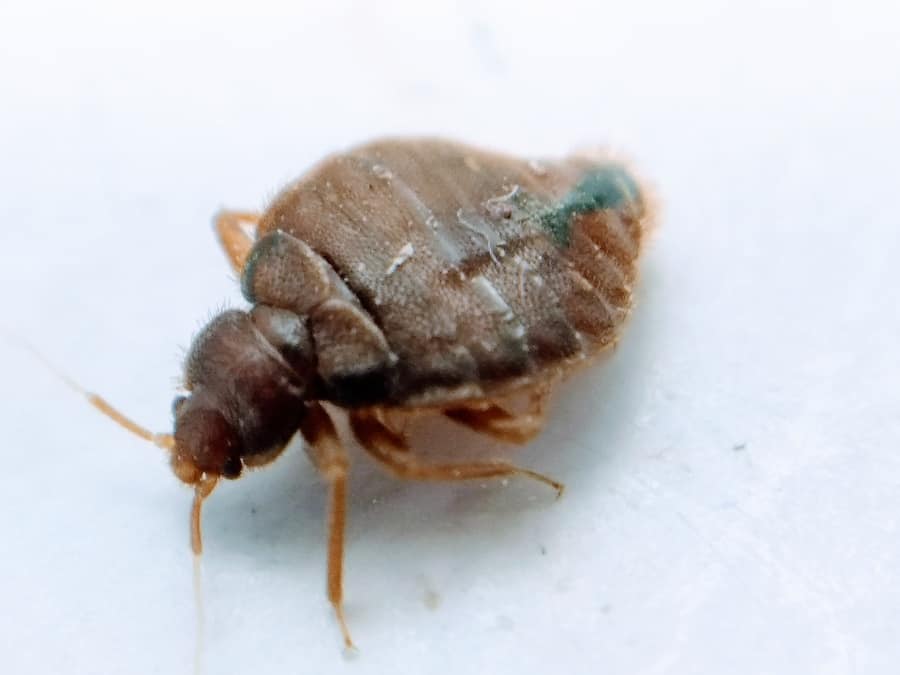
It’s the holiday season, the time of the year when a bed bug infestation can be devastating! Bed bug activity can be confused with only being active in the summer, but they are year-round pests. This means that while the weather cools off, bed bugs are still active during the winter and will be looking towards your Miami Lakes home for warmth! Here’s what you need to know about bed bugs, signs that they’ve infested, and how you can avoid them.
Bed bugs are extremely small, only growing to 3/16th of an inch in length. Before these pests feed, their appearance is brown in color and flat in body shape. After feeding, they become red, swollen, and longer in body length. These pests will often get around by hitchhiking through certain items. Adult bed bugs can be spotted by the human eye, but nymphs are harder to spot, as they are smaller and paler in appearance.
Bed bugs will infest several areas in the home, including behind baseboards, around mattress buttons, within bedding, electrical switch plates, picture frames, and more! There are certain warning signs of a bed bug infestation, including seeing their feces, casings, bloodstains on sheets, bites on yourself or family members, and their eggs. The best evidence, however, is seeing these pests crawling around in your home.
These pests are notorious hitchhikers, catching a ride inside your home through suitcases, old furniture, packages, clothes, and even houseguests. It’s important to be vigilant when traveling or having guests throughout the year. Check out our top preventative measures to avoid a bed bug infestation below,
If you’ve noticed signs of bed bugs or are looking to get ahead of bed bug prevention, consider reaching out to your local South Florida pest control company! These professionals will inspect your home, locate entry points, and recommend a treatment and prevention plan for your home.
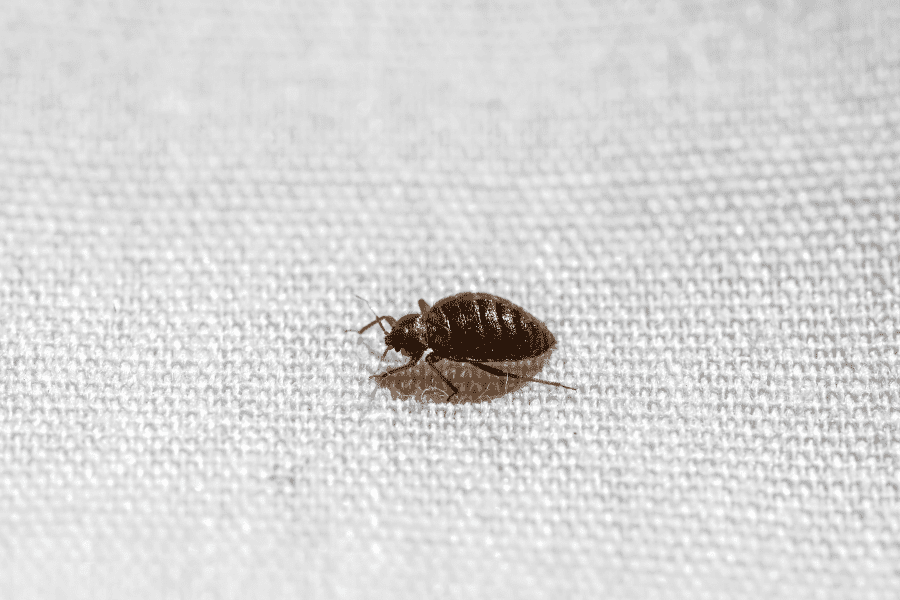
The new year is here and it’s time to get your vacations planned for the upcoming months. Don’t let those vacation plans get ruined by bed bugs! These pests are highly efficient hitchhikers and can move quickly and climb easily into luggage or anything left on a bed in just one night. Hotels and Airbnb’s are the perfect home for bed bugs and are typically where they can be picked up. Here are some tips to prevent bed bugs while traveling!
Once arriving at your home away from home during your vacation, be sure to inspect anything and everything where a bed bug could be hiding. Look for live insects, blood stains, and eggs throughout the room. Typically, with larger infestations, you will notice a sweet, musty odor.
The best place to inspect is the mattress you will be sleeping on. Be sure to take the fitted sheet off the corner of the bed, lift the mattress, and check all the crevices with a flashlight. Other hiding places include baseboards, behind picture frames, and even cracked or ripped wallpaper.
Before using the luggage rack, which you should always use, inspect it for bed bugs. Once cleared, you should then use the rack to keep your luggage elevated off the ground. Keep the rack away from the wall so bed bugs can’t easily climb into your bag.
When beginning to pack for check out, examine your luggage and clothing to make sure you haven’t picked up any extra baggage. A good tip to know is once home, unpack in your garage or outside of your living areas, and put clothes directly in the dryer, as heat is a deterrent for bed bugs.
If you suspect you have returned home from vacation with hitchhikers, reach out to your local, licensed pest control company and receive a FREE bed bug inspection today!
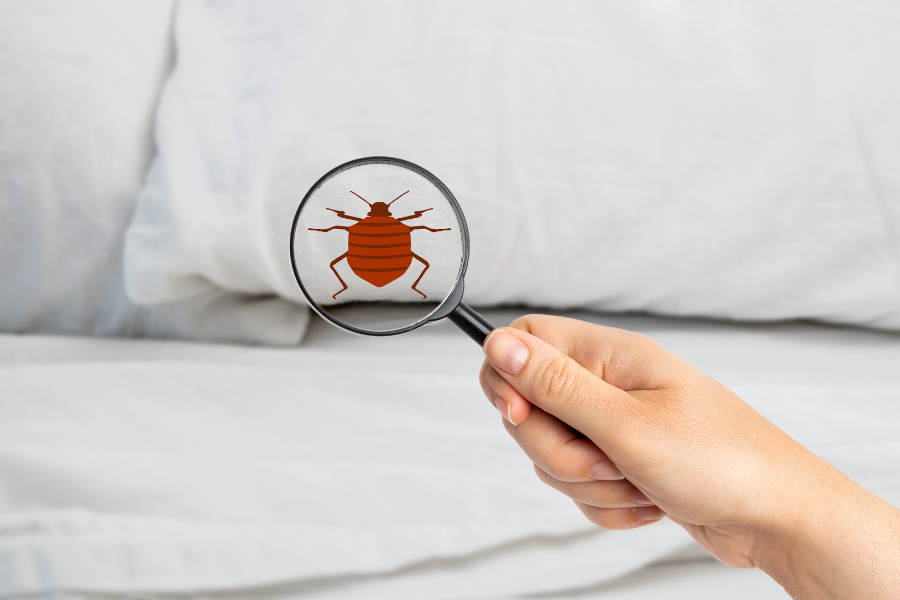
Typically, when temperatures begin to drop, that means many bugs go into a sort of hibernation mode. This isn’t necessarily the case for bed bugs. Being predominantly indoor pests, they tend to survive the colder months. It’s also a big time for them to spread because of all the holiday travels, so always be aware of any pests that could ruin your holiday fun.
There are many ways that bed bugs can spread from one location to another. They will climb into our belongings and can lay their eggs in them. We will then carry these items from a location of infestation to a new location. Even if your bags or items are left outside, it will take a while for them to be harmed by the cold, as they are more resilient to the cold than they are to the heat. And since they will be hiding in our items, they will be protected from the wind and cold air.
Here are some tips to follow while travelling, so you can prevent bed bugs from home with you.
If you believe you have picked up bed bugs while on your travels, be sure to call your local pest control company and they will be able to assist you with a customized plan of action.
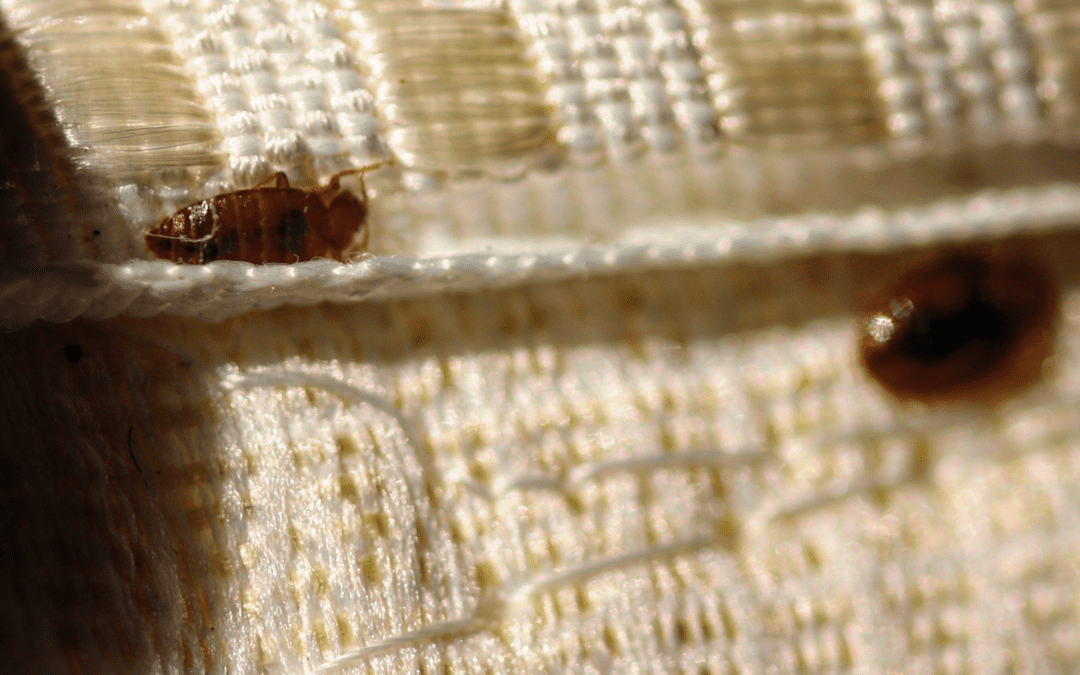
It’s time to unpack and get back to normal after all the summer vacations we were able to conquer. Hopefully, you came back to a stress-free situation that didn’t involve bed bugs; but if you weren’t one of the lucky ones, here are some tips to rid yourself of those unwanted pests.
Identify the pest to make sure it is indeed a bed bug. If you live in an apartment building, be sure to notify your landlord immediately, as they might have the responsibility of providing treatments. If you are in a single-family home, inspect all areas of your home to understand the extent of the infestation.
So, you have bed bugs, now what? Keep records throughout the whole process. Note dates and exact locations where these pests were found. This will help you track progress and to know where to target your removal efforts. You should be checking for at least a year after you’re done to make sure they are all gone.
Be sure to keep the infestation from spreading by implementing these tips:
Preparing for treatment is very important, whether treating bed bugs yourself or with professional help. If you plan on treating them yourself, ensure the methods you select are safe, effective, and legal. Avoid treatments that don’t work, like rubbing alcohol, kerosene, or gasoline, which are highly flammable. Sticky traps are also not effective in stopping bed bugs.
Some useful treatment solutions are:
The best solution for bed bugs is to contact your local pest control company. These professionals will have access to highly effective treatment methods. They will provide you with a bed bug control plan that is right for you and your property.
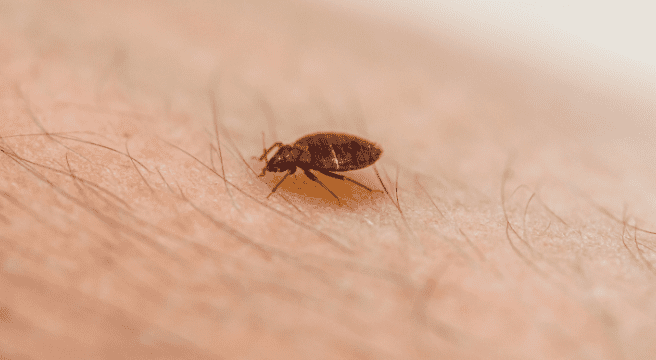
The old saying “don’t let the bed bugs bite” shouldn’t instill fear into your nighttime sleep. These fearsome insects bring itchy bites, crawling hordes, and ruined furniture. Bed bugs are one of the most difficult pests to get rid of. Identifying them and acting quickly is the first step in your plan of action. Let’s break down the basics of bed bugs and discover what to do if you suspect you have a bed bug infestation.
If you’re waking up finding mosquito-like bites all over, then that can be a tell-tale sign that you have bed bugs. But what does the culprit look like? Bed bugs are tiny, appleseed-sized insects. They are flat and oval-shaped with horizontal ridges across their bodies. Bed bugs don’t have wings, but they are extremely fast movers. Adult bed bugs are visible to the human eye and can be detected by sight. Bed bug nymphs can be harder to identify, as they are smaller in size and paler in color.
Bed bugs are notorious hitchhikers, allowing them to travel long distances. They latch onto suitcases, clothes, and linens, ending up wherever these items are taken. Therefore, the spread of bed bugs comes easily. A common place that bed bugs are found is in hotel rooms. It’s important to lookout for bed bugs when visiting a hotel. Before sleeping, thoroughly inspect hotel beds and pillows. Since they tend to travel easily, be sure to vacuum suitcases and inspect for any signs of bed bugs upon returning from a vacation.
If you have confirmed that you have bed bugs, you’ll want to act fast to get rid of them. Try a combination of these methods: heat and chemicals. This is considered one of the best ways to get rid of bed bugs. Bed bugs don’t like hot temperatures, so throwing items infested by bed bugs in the dryer on high heat for 20 minutes will remove them. If you travel often, you may want to start doing this with your belongings when you return home.
While throwing affected items in the dryer is an excellent choice to eliminate them, it doesn’t address a larger infestation, and it won’t find them in all their hiding places.
If you suspect a bed bug infestation in your home, it’s best to contact a professional pest control company to assess the situation. A trained professional can help decide the best plan of action, treatment, and prevention plan for your home.